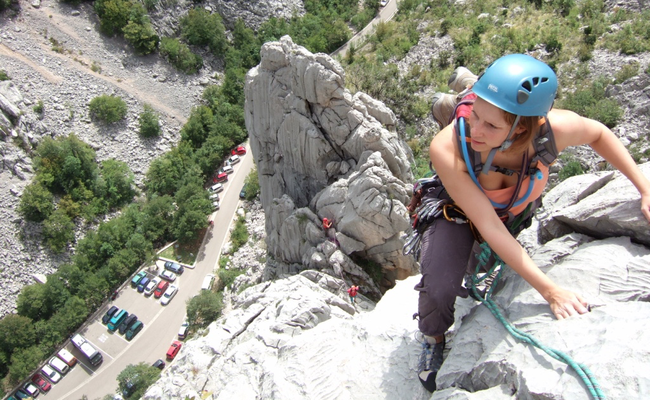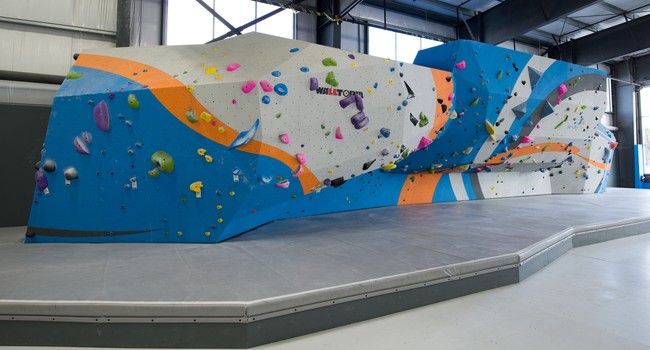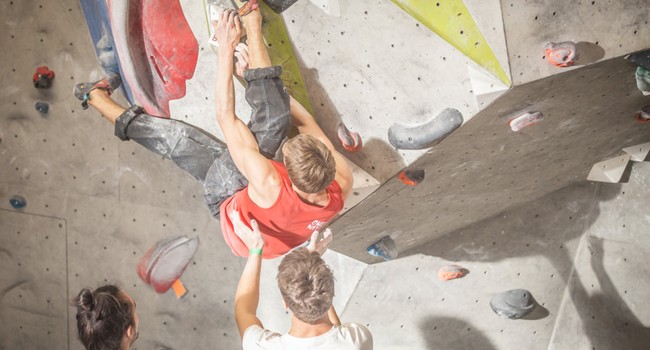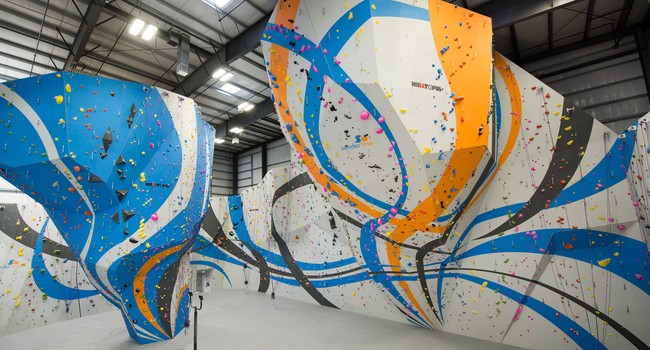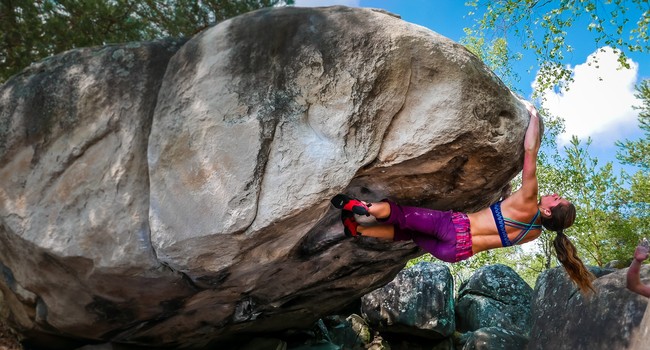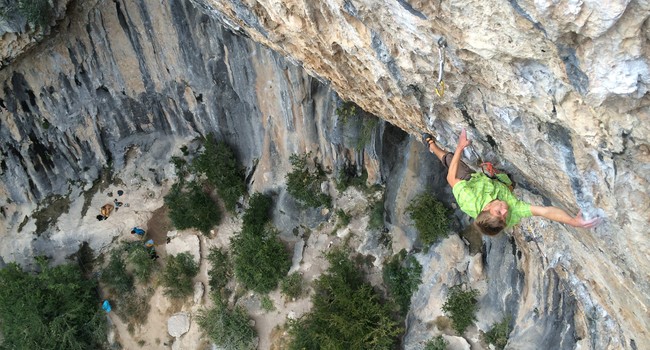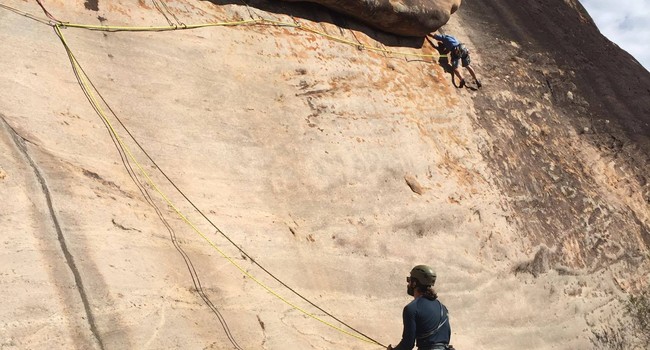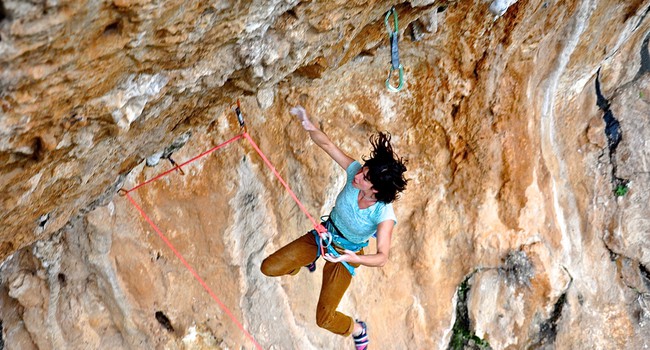Contents
Welcome to the climbing community and its primary resource, theCrag. We assume that you are relatively new to rock climbing and want to gain a quick overview about the sport, its different disciplines, the equipment and abilities required and some of the lingo.
This introduction is here to do that and guide you to further reading or resources where you are interested. By no means is it intended to be a complete guide to rock climbing or to replace a thorough introduction to the sport by experienced climbing teachers or trainers. However, it should encourage you to start climbing and to join this constantly growing community. Climbing is fun, good exercise, rewarding and more easily accessible than you might think!
Climbing historyBack to contents
The earliest known roots of rock climbing lay in China where paintings dating back to 200 BC show people rock climbing. In Europe and elsewhere rock climbing was a means to climb mountains, hunt and collect valuable items. In the late 19th century, European rock climbing became an independent pursuit outside of mountain climbing with aid climbing (using equipment that acts as artificial handhold or footholds) as the predominant style. The second half of the 20th century saw the development of free climbing (climbing without artificial holds and tools) and all the many climbing disciplines described hereafter.
Climbers are often individualists or organised in small groups of friends. They are typically young (39% are under 18) but keep climbing until 60 and after. As per 2016 the IFSC estimates that 25 million people are climbing regularly and that about 3,000 people climb for the first time every day.
In many countries the Alpine or Mountaineering Clubs act as advocacy group for climbers but you might also find climbing specific advocacy groups in your area or country. Often they are a good point of contact for any question you might have.
Climbing presents us with endless opportunities to chase the flow, the high, the rush. And success is never guaranteed. Add in all the other wonderful payoffs we gain through climbing and it is no surprise so many of us are addicted (Jeff Elison)
Most climbers climb for fun, for the exercise, the reward, for being with friends, both outdoors and indoors. Very few climbers consider themselves professional climbers and are able to make a living from this marginalized sport. That being said, there are climbing competitions on regional, country specific and global level organised by different bodies with the IFSC World Cup being the most prominent one. Climbing was also selected as an Olympic discipline starting with the Olympic Games in Tokyo in 2020.
Climbing disciplinesBack to contents
Climbing is a sport of many disciplines and for a newcomer it can be pretty confusing. In this chapter we list and explain the most common disciplines, but please be aware that there are others you might hear of. There are also multiple ways to distinguish between disciplines. We choose to distinguish firstly between indoor and outdoor climbing, then we look at the different disciplines practised in these two settings.
Indoor climbingBack to contents
Indoor or gym climbing is relatively new and developed initially as a form of training for outdoor climbing. That being said, today more people climb indoors than outdoors and it is nowadays the most common way to get started with climbing. A controlled environment, easy, year round access and less gear requirements compared to outdoor climbing make it the setting of choice for many people who want to practise climbing. The number of climbing gyms is growing rapidly with an estimated 50% increase between 2007 and 2012. Countries like the USA, Germany and Japan each have hundreds of major gyms, making it very likely that you will find one near you.
Typically you can distinguish between two types of climbing disciplines practised indoor: bouldering and sport climbing. Sometimes a gym might be dedicated to one of the two or offer both. There are a few more disciplines practised indoor, such as speed climbing that are not covered here.
Indoor BoulderingBack to contents
Bouldering is climbing without rope at heights that typically allow you to safely jump down back to the ground. In bouldering gyms (or the bouldering area of any gym) the area below the climbing walls is normally protected with mattresses to ensure a soft landing. Indoor bouldering is very popular as it has some obvious advantages. You don’t need to rely on a partner and can go alone whenever you have time (even though it is way more fun in a group, but you will most likely find like minded people in the gym), you only need climbing shoes (that you can probably rent) and no other equipment (maybe a chalk bag) and as you typically do not climb very high it is more easily accessible for people with a fear of heights.
From a climbing perspective bouldering allows you to focus on the climbing and its individual moves without having to worry about protection, rope handling and such. This typically allows people to make faster progress and climb harder than in other disciplines. Later, it is also an excellent complement to sport climbing as it allows you to focus on your technical and physical weaknesses and specifically train them.
Indoor Sport climbingBack to contents
Sport climbing is what many people mean when they say climbing. Indoor sport climbing means climbing routes with a rope either in lead (meaning you clip the rope in protection points using fixed quick draws while you climb higher) or top-rope (meaning you are protected from falling by a pre-installed rope). Depending on the gym, you might find routes with pre-installed ropes for top-roping and/or routes for lead climbing. Of course you can always install a rope (or have someone else do it) and top-rope a lead climb (see also Tick Types for more details on ascent styles). The height (or length) of indoor sport climbs depends obviously on the gym but are typically between 10 and 30 meters and vary from slab (positive angle, less than vertical) to steeply overhanging routes (negative angle, steeper than vertical).
Indoor sport climbing requires a partner you can rely on for belaying (protecting you from falling to the ground) and more equipment than indoor bouldering. Climbing shoes, a harness, a belay device and, if you want to lead, a rope are required but typically most of it can be rented in a gym. Check your local gym for beginner courses or find a reliable and experienced partner to start sport climbing.
Outdoor climbingBack to contents
Outdoor is where the climbing sport has its roots and being outdoors and in nature is one of the many reasons people enjoy climbing. Fewer people start their climbing career outdoors than indoors but there is no reason to not get started outdoors. Find a climbing or alpine school and check out if they offer beginner courses or introduction days for novices, it will be a very enjoyable and exciting time! Outdoor climbing has more disciplines than indoor climbing, but some aspects overlap. Here we distinguish between three major outdoor climbing disciplines but keep in mind, that there are a few more like Deep Water Soloing (DWS), Ice Climbing, Aid Climbing and Free Soloing:
- Bouldering
- Sport Climbing
- Traditional Climbing
Outdoor BoulderingBack to contents
As outlined for indoor bouldering, bouldering is climbing without rope at heights that typically allow you to safely jump down back to the ground. Obviously bouldering outdoors means that you need to make sure that the landing area is safe. This is typically done using so-called crash-pads that are placed in a way to make sure you land on them and a fall is safe. In outdoor bouldering it is also highly recommended to have “spotters”, one or more people that guide your fall to the ground and ensure that you land and stay on the crash-pads. Contrary to some beliefs, a spotter is not there to catch you but to assist you in your fall and ensure a good and safe landing.
Bouldering does not require big cliffs or endless boulder fields, you can have fun for a long time on a boulder in your backyard. That being said, you will find tons of boulder areas on theCrag, including the famous ones like Fontainebleau in France, The Rocklands in South Africa or Bishop in the USA.
Outdoor Sport climbingBack to contents
Sport climbing involves climbing routes that are equipped with fixed protection such as pre-installed bolts and anchors. Routes can be either single-pitch (the route length allows you to go to the top and back to the ground with your rope, the belayer stays on the ground) or multi-pitch (once the first climber has reached the top of the pitch, the second climber follows them to the anchor from where they climb the next pitch and so on. This allows you to climb long routes).
Outdoor sport climbing requires an experienced and reliable partner and at a minimum climbing shoes, harness, belay device, rope and a number of quickdraws to clip into the pre-installed protection. A helmet is recommended.
Most, if not all, outdoor sport climbing areas are developed by enthusiastic individuals using their spare time and own money to put up access to the cliffs, bolt the routes (drill in the protection) and - hopefully - maintain the quality and safety of the installed equipment over time. Information about climbing areas and routes can typically be found in printed guidebooks (so-called topos) and of course here on theCrag where this information is supplemented by ascent information provided by our users.
Traditional climbingBack to contents
Traditional climbing (also called trad climbing) involves climbing of routes in which protection against falls is placed by the climber while ascending. In some cases trad routes have fixed anchors that you may use to get back to the ground or even individual pre-installed protection (bolts), in which case it is called a mixed route. As for sport climbing, these routes can be either single- or multi-pitch routes. Trad climbing requires the same basic equipment as sport climbing but of course you also need the removable protection devices. The most common ones are called friends and nuts (which come in many different sizes) but many more exist. Trad climbing requires more experience than sport climbing, as you also have to place the protection (gear) while you climb. As for sport climbing, you will find information about trad climbing areas and routes in printed guidebooks and here on theCrag.
Climbing difficultyBack to contents
It won't be long and you will be faced with a discussion about the difficulty of a route - indoor or outdoor, bouldering or sport climbing. Even though most climbers climb for the fun of it, it seems to be human nature to measure your own progress and compare yourself to your peers using a more or less suitable system. In the climbing world - with all its variety - the rating or grading of a climb is done using so called difficulty grading systems. As you can imagine, there are many different grading systems, some by discipline but most by area (e.g. different systems in different countries). theCrag handles and converts all of them and if you are interested you can read more about them in the Grades and Grade Conversions article. The basic principle of all difficulty grading systems is, that the harder a climb, the higher the number. This means that in French scale a 6a is harder than a 5b or in HUECO-scale a V8 is harder than a V6 and so on.
How difficult a climb actually is is determined by many factors such as steepness of the route, size and quality of holds, the distance between holds, the difficulty of the movements to reach the next hold, how sustained a route is and so on. Obviously, grades have a subjective component and what feels hard to one person might feel less so to another. theCrag allows you to record your impression and grading of a route which will provide evidence to how close the 'assigned grade' to the true difficulty of a route. If you are interested in your personal progress we strongly recommend to read the article on Climber Performance Rating (CPR) - a tool that allows you to monitor your personal progress over time implemented on theCrag.
Climbers are just big kids who haven’t lost touch with our evolutionary roots (Jeff Elison)
Climbing equipmentBack to contents
When you enter a climbing equipment shop for the first time you are probably overwhelmed by the amount of different equipment (often called gear) and variants thereof. In this chapter we will just briefly touch on some of the most important equipment you might need when you start climbing. You will find out for yourself later what else you might need, as it heavily depends on what disciplines you prefer, what equipment your partners have and what your personal preferences for climbing are.
Climbing shoesBack to contents
Climbing shoes are probably the first thing you would like to buy when you start climbing. Not everyone likes to put their bare feet in rented shoes for long. The choice of climbing shoes is almost endless. Many different brands offer different models, each targeted at different climbing styles and foot shapes. And then there is the question of size, a topic discussed at length. Typically, climbing shoes are of a smaller size than your normal street shoes in order to improve sensitivity towards foot placements. This tightness may also lead to pain and often it takes a while to get used to your shoes. For beginners we recommend the use of tight but comfortable shoes, you will not climb at the technical limit of a shoe that fits you reasonably well and it is more important that you enjoy the climbing without pain than being able to stand on the smallest rock feature. Over time you will identify the brand and model that fits your foot best and maybe you will have more than one pair of shoes e.g. one for long, multi-pitch climbs and a different one to go bouldering or to do technical climbs. As a start it is best to go to a climbing gear shop with a small “shoe test area” and find out what shoe and size you feel comfortable with.
HarnessesBack to contents
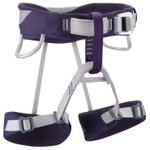
Chalk and chalk bagsBack to contents
Chalk (a finely ground form of magnesium carbonate) is used as drying agent to minimise sweating of your hands and is used for almost all forms of climbing. You typically buy it in plastic bags and then fill it into your chalk bag. Chalk bags are either strapped around your waist (or attached to your harness) for sport and trad climbing or “hand bag style” and placed on the ground for bouldering. Due to excessive chalk dust some gyms do not allow the use of “loose chalk” but recommend the use of chalk balls (where the chalk is inside a tissue) or liquid chalk (chalk suspended in an easily evaporating liquid that is applied to your hands) instead. Chalk bags come in all shapes and colours.
Belay devicesBack to contents
Probably no other piece of equipment is as important and offers as much choice as the belay device. For a long time a carabiner and the use of the munter hitch were the method of choice for belaying. In the last few decades a multitude of different belay devices have entered the market. Some of them disappeared again, others seem to be here to stay. The choice of belay device depends on your plans and of course on your preferences. If you plan to climb multi-pitch routes with either double- or twin-ropes you have different requirements compared to only climbing with a single rope. A good approach to distinguish single rope belay devices is to distinguish between auto-blocking devices and manually blocking devices. Auto-blocking devices block the rope automatically when the climber falls, whereas manually blocking devices require the belayer to respond. The most famous auto-blocking belay device is the GriGri (by Petzl) but there are many others achieving the same thing with similar or different technical solutions. Be sure to read the manual, practise the use of the device with an experienced climber and always stay alert - even when using an auto-blocking device - when belaying your partner. Always check your partner’s belay device and have yours checked before embarking for a climb!
RopesBack to contents

HelmetsBack to contents
If you climb outdoors you should consider buying a specialised climbing helmet to protect yourself from falling rocks or equipment or head injuries from crashing into rocks when falling. We hope you don’t need it but depending on the quality of rock and if you venture into multi-pitch climbing it is strongly recommended to wear one when climbing and belaying.
QuickdrawsBack to contents
Quickdraws (also called draws or QD’s) are two carabiners linked by textile webbing and are used to clip your rope into pre-installed protection such as bolts. As such, their main use is in sport climbing. Often, one of the carabiners is held in place by a piece of rubber in the webbing to make it easier to clip in the rope while the other carabiner (clipped into the bolt) can move freely. Quickdraws come in many shapes, sizes and colours and with webbings of different length to accommodate different requirements while climbing. For beginners it is often enough to have one set (depending on your climbing area and length of routes you might need 10 to 15) of quickdraws and complement them later with different types and models as your climbing evolves.
Crash padsBack to contents

Protection gear (cams, nuts)Back to contents
In this article we mention protection gear for trad climbing just for the sake of completeness. The choice and options are plentiful with friends and nuts as the most common protection devices. Cams (also called friends) are spring-loaded camming devices that can be put into pockets and cracks and expand as you loosen the spring whereas nuts are asymmetrically shaped pieces of metal than can be inserted into cracks. Have a look at these and other devices in your climbing gear shop, we are sure you will like them!
Of course there are loads of other bits of equipment you might want to get, from slings to carabiners, belay glasses, a clip stick, knee pads, daisy chains and many more. You will find out what you need once you get more experience and know what form of climbing you prefer. And then there is always this new thing that just came out and everybody wants to have…
Abilities requiredBack to contents
Now that you know about the major climbing disciplines and equipment you might wonder what physical requirements there are and which other abilities you should have or acquire. Let’s start with some of the practical abilities.
Practical abilitiesBack to contents
A key ability for rock climbing - unless you are only bouldering - is the ability to tie certain knots. There are whole books and some well done apps explaining how to tie the dozens of different knots that you might want to use. We just mention three important ones, that you should be able to tie any time without having to think about it. The retrace figure eight to e.g. tie yourself into the rope or connect two ropes, the prussic as safety when rappelling or when you want to climb up on a rope and the munter hitch for belaying when e.g. you forgot or lost your belay device. Practise them at home and ensure you know how they look. Always check your partner’s tie-in knot and have yours checked before climbing (partner check).
Physical abilitiesBack to contents
As for physical abilities, you might be surprised to hear that there are not really any required. Obviously climbing is a physical activity but because there are so many different disciplines and because you can and will have fun on any level, climbing is really open to everyone. If you practise climbing you will soon realise how fast you progress and how much fun it is to see and experience that. You will improve your technique and you will get physically stronger (mostly your arms and upper body). Flexibility is a plus if you have it but it is not a prerequisite to climbing. Climbing can also be practised by people with disabilities and there are even competitions in para-climbing. Size, weight, strength - it really doesn’t matter - simply enjoy this awesome sport!
The best climber in the world is the one having the most fun (Alex Lowe)

